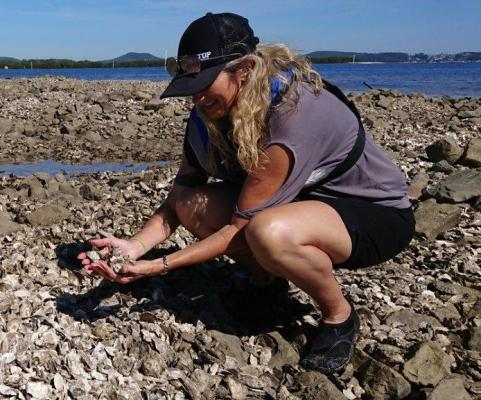The oysters destined to grow and form reef beds in the Noosa River are not intended for the dinner plates of Noosa restaurants or homes.
The Nature Conservancy Noosa shellfish restoration project manager Craig Bohm said the project aims to restore the oyster beds that once spread across the Noosa riverbed and created a rich ecosystem and shelter for a variety of fish species.
It is not intended to be an aquaculture project for oyster harvesting.
Craig Bohm arrived in Noosa in February to take on the project manager role after six years working on community development projects in Fiji.
And while he walked in just as COVID-19 was shutting down the region there has been plenty of behind the scenes work to keep him busy.
There have been a range of government permits to secure and studies to perform before the project can go ahead.
Mr Bohm said the shellfish restoration project would be very different from the University of the Sunshine Coast oyster reef trial which had yielded valuable insights into shellfish recruitment in the river.
TNC will draw on its knowledge and experience acquired from 30 years of creating oyster reefs in South Australia, Victoria and Western Australia
“These techniques have been reviewed by scientists, and are now accredited for use by the Society for Ecological Restoration,” he said.
He meets regularly with the recently formed Technical Advisory Group (TAG), a group of specialists in shellfish restoration, local and state government processes and project management, who are guiding the project as it unfolds.
TNC is doing its own studies of the river, completing a technical shellfish restoration suitability model for the Noosa estuary, including undertaking detailed site analyses to guide the configuration and placement of restoration substrate.
“It’s very scientific,” Mr Bohm said. “We have to look at where oysters grow. In the Noosa River there are lots of oysters but few suitable places to form shellfish ecosystems.
“Rock oysters want to live in the Noosa estuary, but they lack the right type and shape of settlement substrate on which to re-establish themselves and form proper shellfish beds (rather than just a few oyster grouped together on a pilon, rock wall or jetty). Our Noosa project will lay the right substrate oysters and other species need to form complex shellfish beds.
“This restoration substrate is laid at the restoration sites, in a tried and trusted way that creates ‘aggregate lock’ whereby materials hold each other on site by the way they interlock with each other. The configuration of the substrate is determined specifically for each individual location and in close reference to the bathymetry and hydrographic (current flow and velocity) information for the site.”
Mr Bohm said TNC plans to progress slowly with the project, taking the time to consult with stakeholders to gain their views, explain their plans and share knowledge as they go along.
“We have to fit in with the ebb and flow of the Noosa river,” he said.
“We have to fit in with where people are using the river and surgically place these oyster beds without getting in the way of Noosa users.”
Once the oyster substrate is sited it should only be a few weeks before oysters begin to grow and flourish.
Mr Bohm said they would encourage people not to eat the oysters which would filter and absorb toxins but to regard the structures as an environment as they would a rainforest or the everglades.







